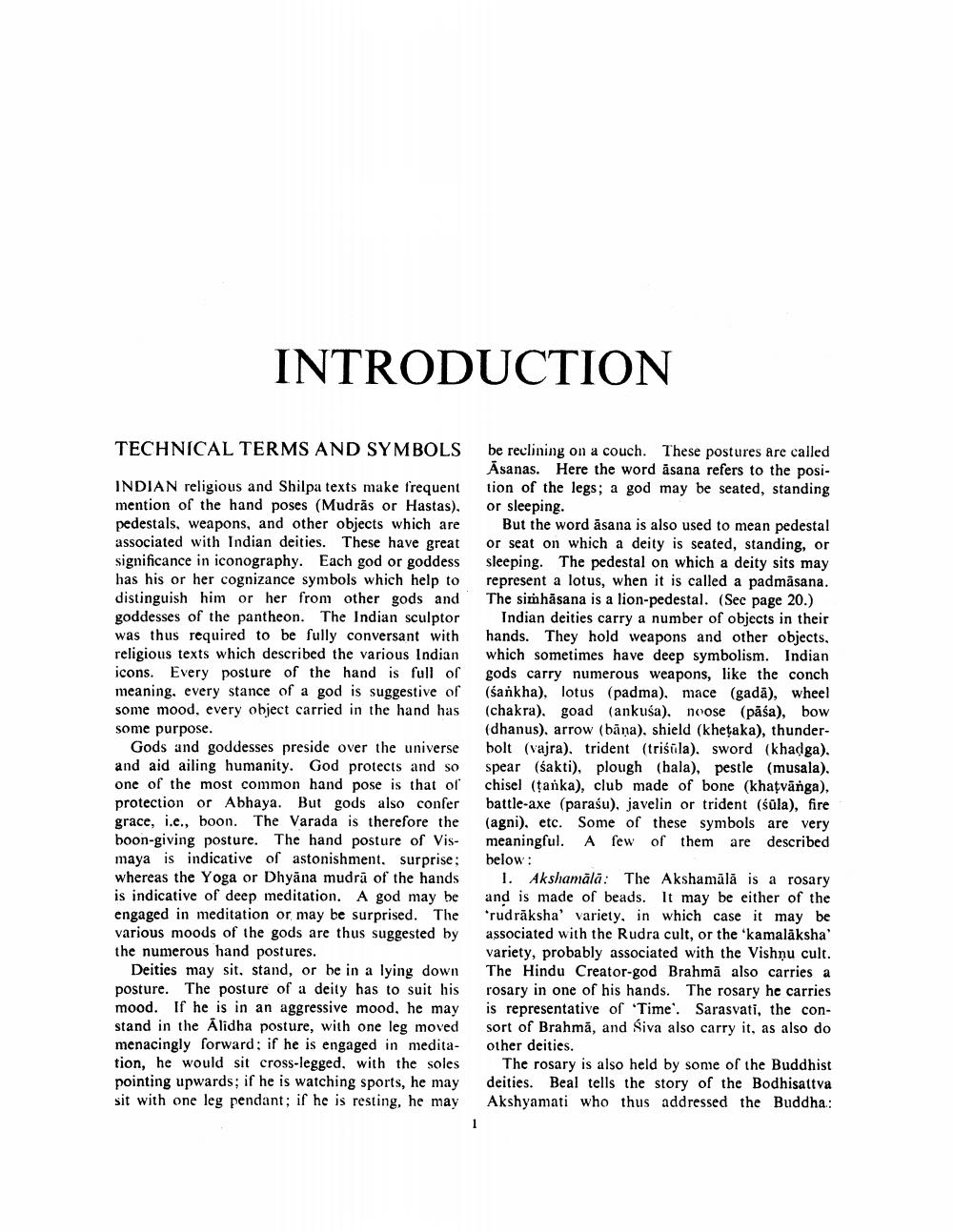________________
INTRODUCTION
TECHNICAL TERMS AND SYMBOLS
INDIAN religious and Shilpa texts make frequent mention of the hand poses (Mudras or Hastas). pedestals, weapons, and other objects which are associated with Indian deities. These have great significance in iconography. Each god or goddess has his or her cognizance symbols which help to distinguish him or her from other gods and goddesses of the pantheon. The Indian sculptor was thus required to be fully conversant with religious texts which described the various Indian icons. Every posture of the hand is full of meaning, every stance of a god is suggestive of some mood, every object carried in the hand has some purpose.
Gods and goddesses preside over the universe and aid ailing humanity. God protects and so one of the most common hand pose is that of protection or Abhaya. But gods also confer grace, i.e., boon. The Varada is therefore the boon-giving posture. The hand posture of Vismaya is indicative of astonishment. surprise; whereas the Yoga or Dhyana mudra of the hands is indicative of deep meditation. A god may be engaged in meditation or may be surprised. The various moods of the gods are thus suggested by the numerous hand postures.
Deities may sit, stand, or be in a lying down posture. The posture of a deity has to suit his mood. If he is in an aggressive mood, he may stand in the Alidha posture, with one leg moved menacingly forward; if he is engaged in meditation, he would sit cross-legged, with the soles pointing upwards; if he is watching sports, he may sit with one leg pendant; if he is resting, he may
1
be reclining on a couch. These postures are called Asanas. Here the word asana refers to the position of the legs; a god may be seated, standing or sleeping.
But the word asana is also used to mean pedestal or seat on which a deity is seated, standing, or sleeping. The pedestal on which a deity sits may represent a lotus, when it is called a padmāsana. The simhasana is a lion-pedestal. (See page 20.)
Indian deities carry a number of objects in their hands. They hold weapons and other objects. which sometimes have deep symbolism. Indian gods carry numerous weapons, like the conch (sankha), lotus (padma), mace (gadā), wheel (chakra), goad (ankusa), noose (pāśa), bow (dhanus), arrow (bāņa), shield (kheṭaka), thunderbolt (vajra). trident (triśüla). sword (khadga). spear (śakti), plough (hala), pestle (musala). chisel (tanka), club made of bone (khatvänga), battle-axe (parašu), javelin or trident (śûla), fire (agni), etc. Some of these symbols are very meaningful. A few of them are described below:
1. Akshamālā: The Akshamālā is a rosary and is made of beads. It may be either of the rudraksha' variety, in which case it may be associated with the Rudra cult, or the 'kamalaksha' variety, probably associated with the Vishnu cult. The Hindu Creator-god Brahma also carries a rosary in one of his hands. The rosary he carries is representative of 'Time'. Sarasvati, the consort of Brahma, and Siva also carry it, as also do other deities.
The rosary is also held by some of the Buddhist deities. Beal tells the story of the Bodhisattva Akshyamati who thus addressed the Buddha:




